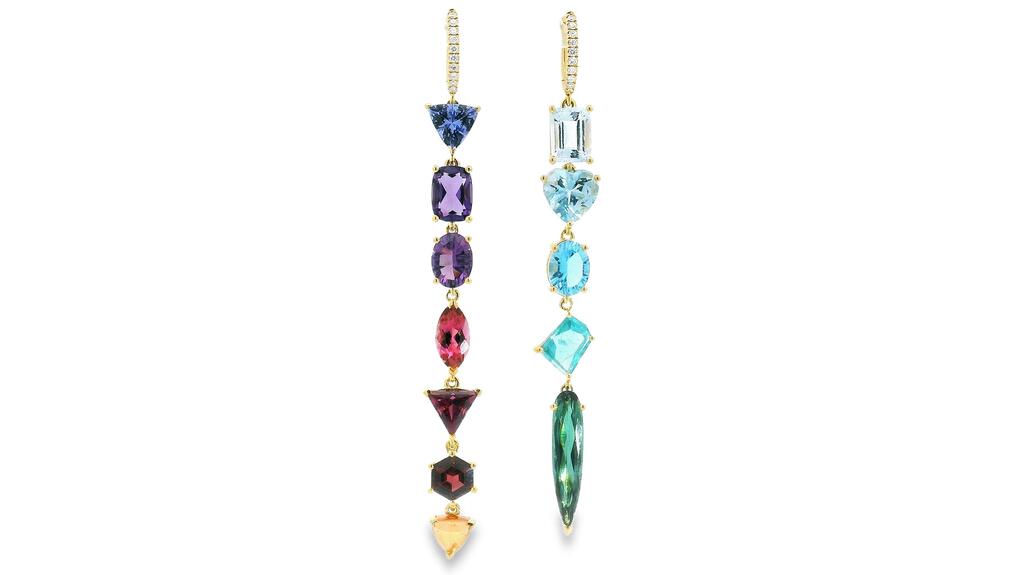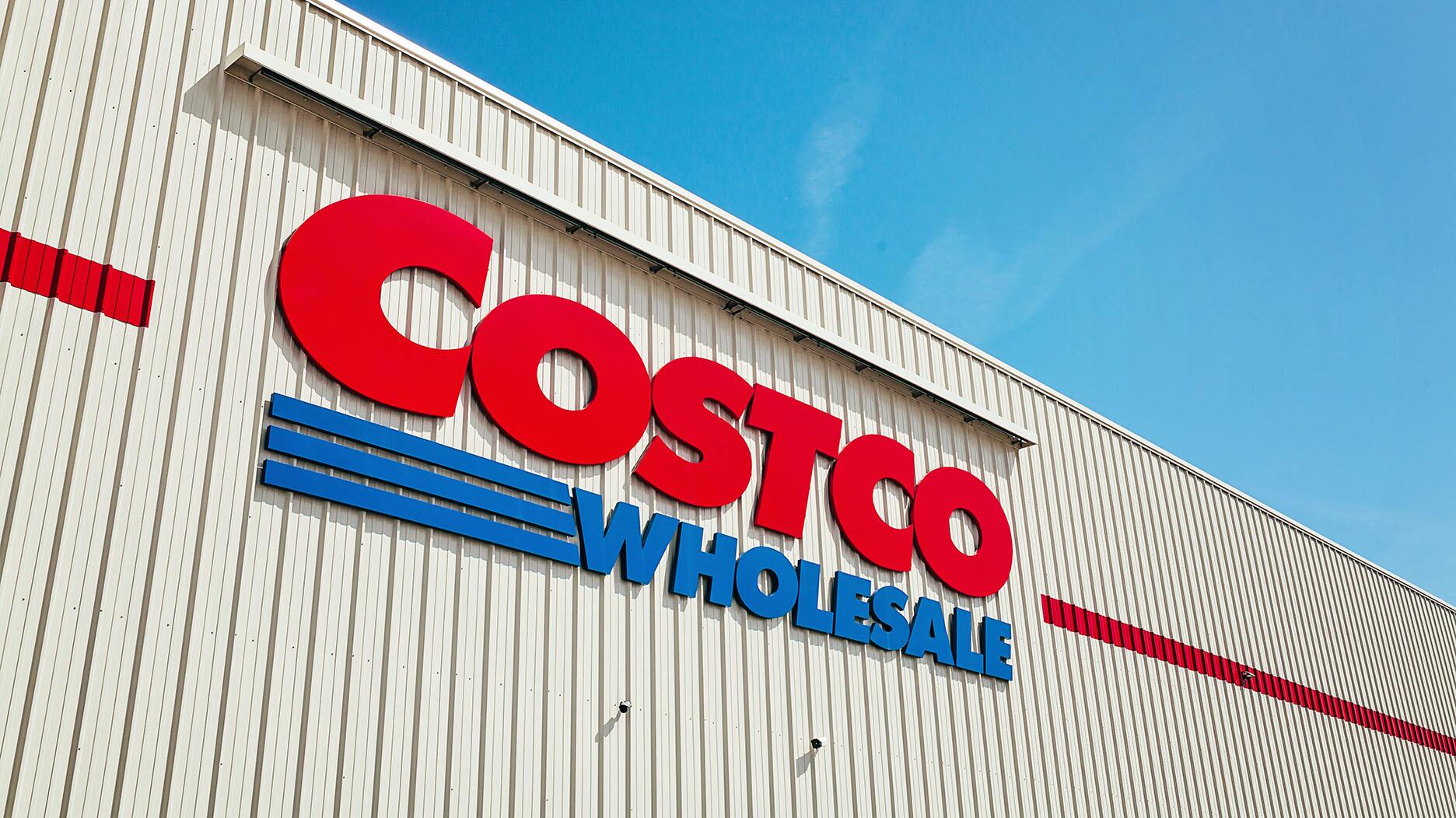Tariffs & Designers: Navigating Pricing in an Unstable Environment
Between tariffs and the sky-high cost of gold, designers enter this year’s Las Vegas shows with a lot of questions and few answers.

Designers in particular have expressed concerns about the unknowns around pricing, sourcing, manufacturing, design, and the overall profitability of their businesses ahead of one of the most important weeks of the year.
The Couture and JCK shows are slated to kick off next week in Las Vegas, and exhibitors don’t know what to expect.
In early April, President Donald Trump announced a slate of so-called reciprocal tariffs that stack on existing customs duties.
Hours after they went into effect on April 9, the president put a 90-day pause on the tariffs in place for most countries—expect China—with a baseline tariff of 10 percent to remain.
A month later, following a weekend of negotiations, the United States and China reached a deal that temporarily dropped tariffs on Chinese goods imported into the U.S. from 145 percent to 30 percent and put another 90-day pause on higher tariffs while the two countries negotiate a long-term deal.
Another twist in the tariff saga came Wednesday, when the U.S. Court of International Trade declared President Donald Trump’s “reciprocal” tariffs invalid, though nothing is likely to change in the short term as the Trump administration appeals the decision.
The tariffs—which ranged from 10 to 50 percent—currently stand at 10 percent for most countries and 30 percent for China, and many in the jewelry industry are unsure how to proceed.
Designers must price their pieces without knowing if the cost of materials will increase at the end of the 90 days and, if so, by how much.
“Now that we have this looming concern and fear and uncertainty of, ‘Is it going to go up even more?’ It’s definitely scaring us and making us scramble,” said designer Zoë Chicco, founder of her eponymous brand.
“At a minimum it’s affecting our prices, and we know we have to adjust for it, but we don’t even know what to adjust to.”

Las Vegas Jewelry Market Week, the name given to the late-spring run of trade shows that take place every year in Las Vegas, is the time for wholesale brands to establish their partnerships for the year.
Retailers will be placing orders with existing vendors, and perhaps adding some new lines, for the upcoming holiday season.
However, designers are unsure if those orders will suddenly cost double to produce come July when the country-specific tariffs potentially could be reinstated, or if the trade court’s ruling will eliminate this additional import tax.
On exhibiting at Couture, designer Lisa Nikfarjam, founder of Lisa Nik, said, “Do I really want to sell my inventory, which is so valuable right now? It’s a ‘Catch-22’ situation because of course we want to sell, but what if we can’t reproduce it?
“What if it’s going to cost so much more to reproduce? We’ve lost money in the transactions we would be making.”
Nikfarjam explained her tagline for Couture will be “while supplies last,” meaning the prices she sets at the show will remain at that level until she runs out of material and repurchasing it may cost more.
While many of her colleagues have been concerned over changing prices too often, she is preparing based on current material costs and will adjust again if needed.
Francesca Simons, fine jewelry consultant, publicist, and founder of Francesca Simons Consulting, said all of her clients have had to raise prices ahead of Couture.
Simons represents 15 jewelry brands/designers: Anita Ko, Ashley Zhang, Bea Bongiasca, Cicada, Eéra, Grace Lee, House of Harlow, Jacquie Aiche, KatKim, Khepri Jewels, Maison H Jewels, Marie Lichtenberg, Rainbow K, Suzanne Kalan, and Yvonne Léon.
Due to the skyrocketing price of gold and to add some “wiggle room” for the tariffs, she said their prices will increase between 10 and 30 percent.
One of Simons’ clients from Europe reported that retailers they have worked with for years are putting buying “on hold” to see what happens with the tariffs.
Some might not be willing to pay more to help designers offset the increased tariffs, something Simons said may contribute to brands opening their own flagships and doing more private selling events, while focusing less on wholesale for boutiques and department stores.
Nikfarjam compared the industry’s reaction to the tariffs to “Lord of the Flies,” William Golding’s 1954 novel about a group of boys stranded in a foreign land whose attempts to self-govern lead to chaos.
She said, “We’re not only dealing with all these strange market conditions [with the price of gold]. [We also have to worry about], what if our customers stop purchasing as much?
“We have to work together to preserve everybody’s best interests. We can’t be self-serving.”
If the tariffs stick and are combined with the high price of gold, it won’t be feasible for many to sustain a healthy business with their current cost structure.
As of press time, gold was $3,325 per ounce, according to APMEX.
“It doesn’t matter if you import from China or not; the trade war itself caused widespread market disruption, leading to a surge in the price of gold,” Nikfarjam said.
She said her brand, Lisa Nik, can absorb the tariffs internally and work with her supply chain partners in order to not hit the customer with every cost, but the price of gold is a factor her partners cannot help mitigate.
“I’m designing pieces, and I say, ‘I wouldn’t pay $1,000 for that. Do we put it out there? Do we take a much smaller margin? Or do we not even make it?’” — Zoë Chicco, jewelry designer
When it comes to the $500 to $1,000 price point, Chicco explained that it is as if this segment doesn’t exist anymore if you’re looking for real gold and diamonds.
Prices may increase, but they have to coordinate with the value of the piece.
“We try to cater to everyone and now the things that are supposed to be sort of quote-unquote inexpensive aren’t inexpensive,” said Chicco.
“I’m designing pieces, and I say, ‘I wouldn’t pay $1,000 for that. Do we put it out there? Do we take a much smaller margin? Or do we not even make it?’”
What was once an entry-level $600 piece for her brand, Zoë Chicco, is now $1,200.
As for Nikfarjam, she said she is discontinuing many styles that no longer make sense under the current conditions and creating new styles that are more viable, as well as working through the large gemstone inventory she amassed during COVID.
The tariffs were put into place with the stated goal of enhancing domestic manufacturing and reducing reliance on foreign products.
But for the jewelry industry, sourcing gemstones and other materials from the U.S. is impossible to do in many cases; a Colombian emerald, for example, cannot be mined in America.
Chicco’s brand manufactures its jewelry in-house in the U.S., but materials like hollow chain are sourced from Italy or Turkey.
“It’s not like we’re not choosing U.S. product when we can. We make our jewelry here; we pride ourselves on it. It’s part of our brand DNA, but there are certain things that are not available here,” she said.
“We’re already paying between 5 percent and 7 percent duties normally to bring in the chain. In years past, we explored domestic producers of solid chain, and we even went so far as going through the sample period. It didn’t meet our needs. We weren’t happy with the product,” Tim Roberts, chief operating officer of Zoë Chicco, added during the same interview.
Now, Chicco is reintroducing leather for her necklaces and bracelets as a way to keep the cost down and working with more budget-friendly gemstones like malachite and tiger’s eye.
“The issue is a lot of what is done in China for my clients cannot be done anywhere else, so that’s one of the biggest hurdles. Their expertise cannot be replicated." — Francesca Simons, fine jewelry consultant
It’s not just sourcing materials, but quality of craftsmanship that brands must focus on.
Some of Simons’ clients are now looking to move their pavé work that has been done in China to New York City.
While her brands don’t assemble pieces in China, some have pavé, diamond cutting, and other work done in the country before importing the jewelry into the U.S. to be finished.
“The issue is a lot of what is done in China for my clients cannot be done anywhere else, so that’s one of the biggest hurdles. Their expertise cannot be replicated,” Simons said.
“Some of these clients have been in business 15 years. If they could have moved it to the U.S. or outside of China at any point, they would have. Whether the tariffs are what they are or not, the expertise cannot be replicated.
“The U.S. doesn’t have the manpower, it doesn’t have the infrastructure, it doesn’t have the labor, it doesn’t have the expertise.”
Brands must adapt where possible with competitively priced products. Before the tariffs between the U.S. and China were lowered from more than 100 percent it was “unworkable and truly unfathomable,” said Simons.
She pointed to LVMH’s attempt to avoid tariffs by bringing manufacturing to the U.S. for Louis Vuitton.
The luxury conglomerate’s Texas factory opened six years ago and has been unsuccessful due to a lack of skilled leather workers available, craftsmanship errors, and a myriad of other issues, according to an article Reuters published in April.
“I’ve already seen that [my clients are] being more cautious. They’re not going to pay double for something.” — Lisa Nikfarjam, jewelry designer
Tariffs and the high price of gold also bring up another question: Will there still be a customer for fine jewelry, and what will that customer look like?
Some brands are concerned that customers of the fine jewelry market, who are informed and well-traveled purchasers, will see the jumps and could choose to shop outside of the U.S. for jewelry untouched by tariffs.
Simons believes that brands that cater to customers in the top 5 percent with plenty of disposable income won’t be affected, but the brands with pricing in the $1,000 to $5,000 range will be.
“I just want to shop and be merry,” is what one of Nikfarjam’s clients told her.
“She will shop, and she will support, and other people will do the same, but I’ve already seen that they’re being more cautious. They’re not going to pay double for something,” Nikfarjam said.
The Latest

Articles about crime, engagement rings, and a necklace worn in the World Series generated the most interest among readers.

As part of the leadership transition, Sherry Smith will take on the role of vice president of coaching strategy and development.

It marks the third time the country has headed the Kimberley Process. Ghana will serve as vice chair.

How Jewelers of America’s 20 Under 40 are leading to ensure a brighter future for the jewelry industry.

The new Bulova x Stetson designs highlight two animals often associated with the American West—the bison and the Texas Longhorn.


Its residency at Yamron Jewelers will run through May 2026.

From influential executives to innovative designers, we pay tribute to the people we said goodbye to this year.

Roseco’s 704-page catalog showcases new lab-grown diamonds, findings, tools & more—available in print or interactive digital editions.

The retailer is expanding into areas with large Indian and South Asian populations.

The Italian brand has opened its first flagship amid the peaks of the Dolomites in Madonna di Campiglio, Italy.

The new curation at the Natural History Museum of Los Angeles County showcases rare gem and mineral specimens in their uncut, natural state.

The couple pleaded guilty to concealing at least $127 million in cash transactions at its precious metals businesses.

Consumers shared concerns about prices, inflation, tariffs, trade, and politics in the survey’s write-in response section.

In February 2026, the auction house will move its headquarters to the former Steinway Hall, a neoclassical landmark on Billionaires’ Row.

The new show will take place Jan. 23-25, 2026.

The former BHP Billiton leader and Gemfields chairman is remembered for his influential leadership throughout his 50-year mining career.

The LVMH-owned brand has partnered with the costume design union to revamp its award for 2026.

The luxury titan inked a deal to acquire an initial minority stake in the jewelry manufacturer with a pathway to full ownership by 2032.

The company’s curation of unsigned vintage and estate jewelry debuted at the Bloomingdale’s in Costa Mesa, California.

In the recent multi-shipment seizure, CBP also found counterfeit Audemars Piguet, Moncler, and Chrome Hearts items.

Helzberg’s Chief Retail Officer Mitch Maggart shared details about its tests of a new store concept rooted in an elevated luxury experience.

Jewelers of America execs and National Jeweler editors discuss tariffs, the sky-high gold price, and the engagement that broke the internet.

The luxury goods company said founder Ippolita Rostagno will remain at the brand’s helm.

Laura Burdese, who joined the Italian luxury brand in 2022, will take on the role in July.

The National Jeweler editors revisit the most noteworthy industry happenings and design trends from 2025.

Need a gift for the cat lover who has everything? Look no further than our latest Piece of the Week.

It purchased the “Grosse Pièce,” an ultra-complicated Audemars Piguet pocket watch from the ‘20s, for a record-breaking price at Sotheby’s.





























